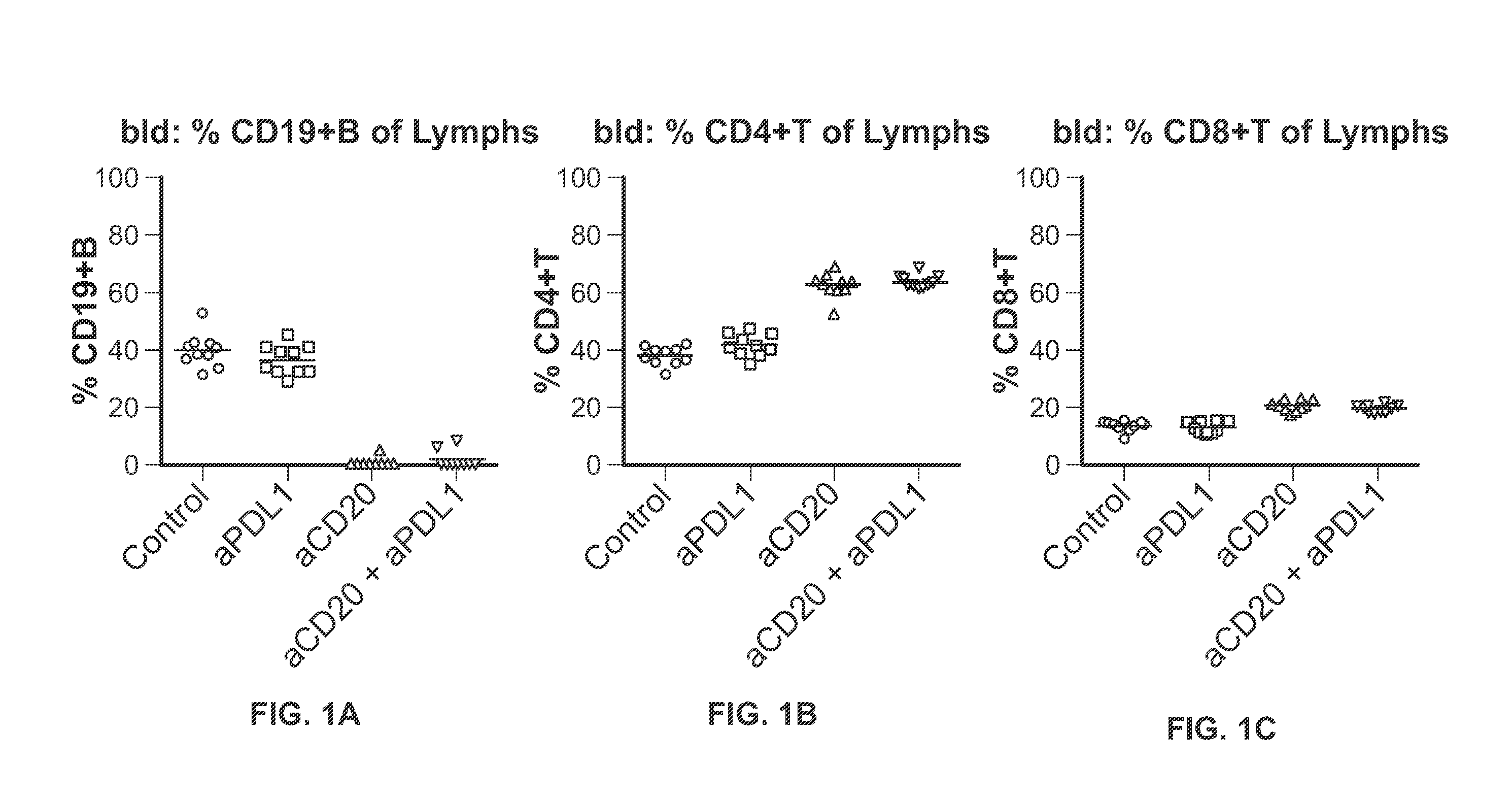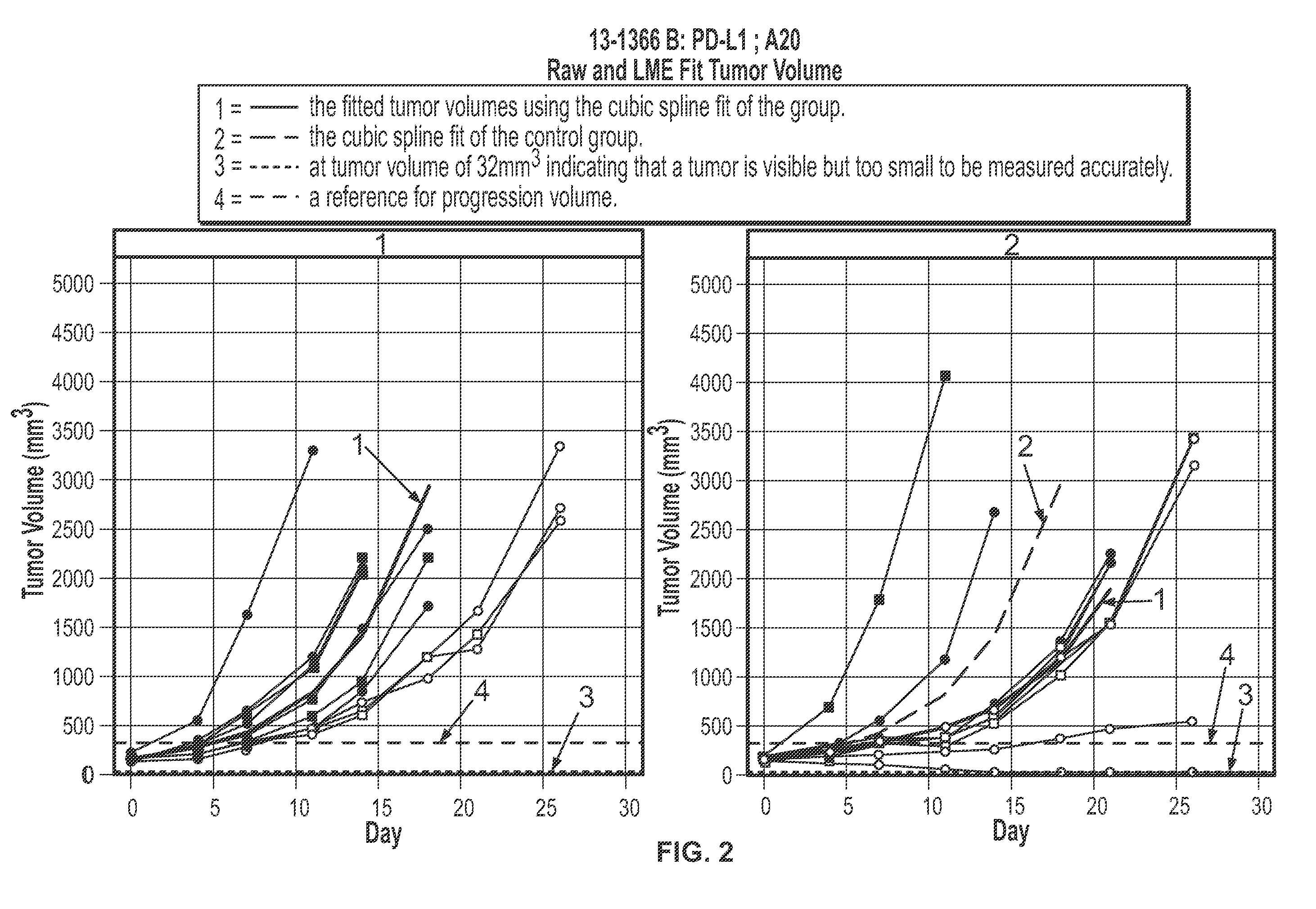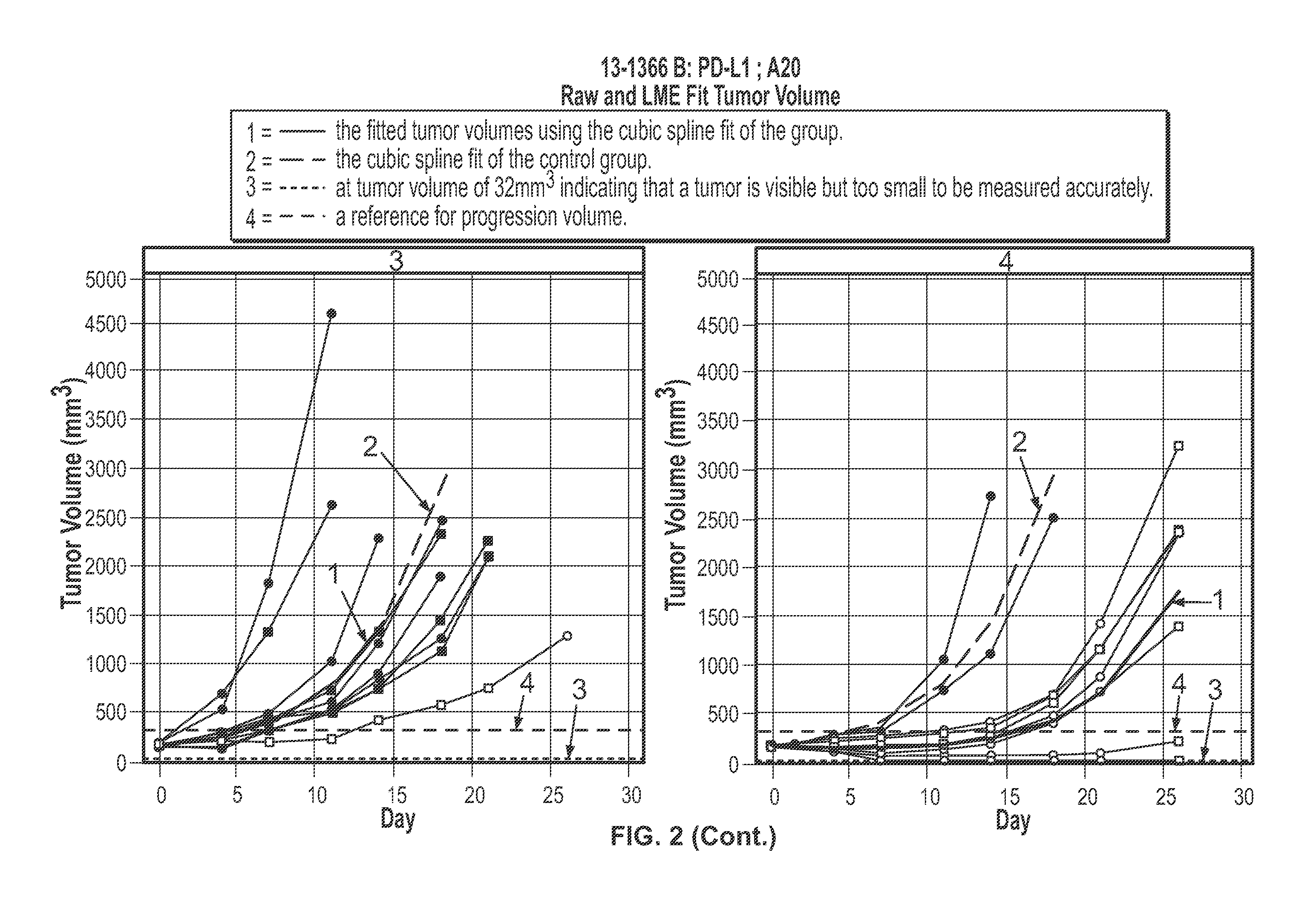Methods of treating cancer using pd-1 axis binding antagonists and an Anti-cd20 antibody
a technology of cd20 and pd1 axis, which is applied in the field of cancer treatment using pd1 axis binding antagonists and anticd20 antibodies, can solve the problems of refractory, exhaustion or tolerance to foreign antigens, etc., and achieve enhanced priming, proliferation and/or cytolytic activity, and enhanced immune function.
- Summary
- Abstract
- Description
- Claims
- Application Information
AI Technical Summary
Benefits of technology
Problems solved by technology
Method used
Image
Examples
example 1
A Safety and Pharmacology Study of MPDL3280A Administered with Obinutuzumab in Patients with Relapsed / Refractory Follicular Lymphoma and Diffuse Large B-Cell Lymphoma
[0351]This Phase 1 interventional open-label, multicenter, global study is designed to assess the safety, tolerability, and pharmacokinetics of intravenous MPDL3280A (i.e., an anti-PD-L1 antibody) and obinutuzumab (i.e., an anti-CD20 antibody) administered in combination to patients with refractory or relapsed follicular lymphoma (FL) or diffuse large B-cell lymphoma (DLBCL). The anticipated duration of this study is of approximately 44 months. The study design is a treatment, single group assignment, open label, non-randomized safety study.
[0352]The Stage 1 primary outcome measures are (a) incidence of dose-limiting toxicites (DLTs) within a time frame of up to 21 days and (b) the nature of the DLTs observed within the time frame of up to 21 days.
[0353]The secondary outcome measures are: (a) incidence of adverse events...
example 2
Effects of Anti-CD20 Antibody in Combination with Anti-PD-L1 Antibody on Tumor Volume and Lymphocyte Populations in Mice
[0357]Mice were inoculated subcutaneously into the right unilateral-thoracic area with 2.5 million A20 cells in HBSS+Matrigel in a volume of between 100 ul and 200 ul. The mice were allowed to grow tumors. When the tumors achieved a mean tumor volume of approximately 80-150 mm3 (Day 0, approximately 6 days after inoculation), the mice were recruited into treatment groups outlined below. Treatment was initiated on Day 0. (Mice not recruited into the treatment groups (i.e., due to dissimilar tumor volume) were euthanized.
Treatment Groups:
[0358]1. Anti-Ragweed (mIgG2a) 10 mg / kg dose on Day 0, Day 3, 5 mg / kg IP, on Day 10 and Day 17+Mu IgG1 anti-gp120 9338, 10 mg / kg IP, TIW×3 n=10[0359]2. Anti-Ragweed (mIgG2a) 10 mg / kg dose on Day 0, Day 3, 5 mg / kg IP on Day 10 and Day 17+Mu IgG1 anti-PD-L1 6E11.1.9, 10 mg / kg, IP, TIW×3 n=10[0360]3. Mu IgG2a anti-CD20 Ragweed / 5D2 10 mg...
PUM
| Property | Measurement | Unit |
|---|---|---|
| dissociation constant | aaaaa | aaaaa |
| dissociation constant | aaaaa | aaaaa |
| dissociation constant | aaaaa | aaaaa |
Abstract
Description
Claims
Application Information
 Login to View More
Login to View More - R&D
- Intellectual Property
- Life Sciences
- Materials
- Tech Scout
- Unparalleled Data Quality
- Higher Quality Content
- 60% Fewer Hallucinations
Browse by: Latest US Patents, China's latest patents, Technical Efficacy Thesaurus, Application Domain, Technology Topic, Popular Technical Reports.
© 2025 PatSnap. All rights reserved.Legal|Privacy policy|Modern Slavery Act Transparency Statement|Sitemap|About US| Contact US: help@patsnap.com



